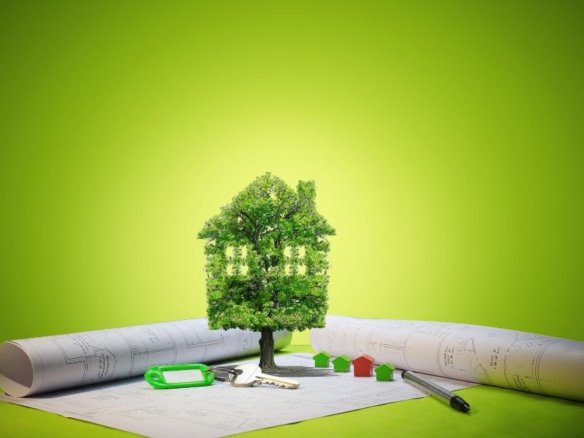Introduction
Investing in a home is one of the most significant financial decisions a person can make in their lifetime. Whether you’re a first-time homebuyer or a seasoned investor, the choice between purchasing an under-construction property or a ready-to-move one is a pivotal decision. Each option comes with its own set of advantages and challenges, making it crucial to assess your unique circumstances, preferences, and objectives.
In this comprehensive guide, we will explore the factors that influence the decision between under-construction and ready-to-move homes, providing you with a detailed understanding of both options. By the end of this extensive exploration, you will be better equipped to make an informed choice that aligns with your financial goals, lifestyle, and risk tolerance.
Understanding Under-Construction Homes
An under-construction home is a real estate property that is in the process of being built and is not yet ready for occupancy. These properties exist in various stages of completion, ranging from the initial groundwork and structural framework to the final touches, such as painting and interior fittings. Buyers who opt for under-construction homes make their purchase decisions based on the developer’s plans, blueprints, and promises.
Advantages of Under-Construction Homes
1. Lower Initial Cost: One of the most compelling advantages of under-construction properties is their comparatively lower initial cost when compared to ready-to-move homes. This feature can be particularly appealing for buyers with budget constraints or those looking for an entry point into the real estate market without a significant upfront financial commitment.
2. Payment Flexibility: Developers of under-construction properties typically offer flexible payment plans. These plans enable buyers to spread their payments over the construction period. This approach can substantially ease the financial burden on buyers, making homeownership more accessible.
3. Customization Opportunities: In certain cases, buyers of under-construction homes enjoy the unique privilege of customizing various aspects of their property. This customization may extend to interior finishes, flooring materials, paint colors, and even structural modifications to cater to their specific preferences and lifestyle needs.
4. Potential for Appreciation: Under-construction properties located in developing or up-and-coming areas have the potential for significant capital appreciation by the time construction is completed. The initial lower cost can translate into substantial returns on investment as the neighborhood evolves and property values rise.
5. New Construction: Under-construction homes are brand new constructions, which means they are less likely to require immediate repairs or renovations compared to older properties. Buyers can expect modern design features and a higher level of energy efficiency, potentially resulting in long-term cost savings.
Challenges of Under-Construction Homes
1. Uncertainty: A notable challenge associated with buying an under-construction property is the level of uncertainty involved. The final outcome may not always align perfectly with the developer’s promises or initial plans. Delays in construction, whether due to unforeseen circumstances or logistical issues, are not uncommon.
2. Risk of Developer Default: In some unfortunate cases, developers may face financial difficulties during the project’s execution. This can lead to project delays or, in extreme cases, project abandonment. Buyers must conduct thorough due diligence to assess the financial stability and reputation of the developer before committing to a purchase.
3. Additional Costs: While the initial cost of under-construction properties may be lower, buyers often incur additional expenses. These can include payments for amenities, ongoing maintenance, and unforeseen construction delays, which might necessitate temporary alternative accommodations.
4. Limited Immediate Use: Unlike ready-to-move homes, under-construction properties do not offer immediate occupancy. This aspect can be a drawback for buyers who require a home promptly, or those looking to generate rental income from their property investment.
5. Legal Complexity: The legal aspects associated with under-construction properties can be intricate. Buyers must meticulously review and understand the contents of the builder-buyer agreements, project approvals, and other legal documents to ensure their rights and interests are fully protected throughout the construction process.
Key Factors to Consider When Buying an Under-Construction Home
Purchasing an under-construction property involves careful consideration of various factors. Here are key aspects that should influence your decision-making process:
1. Developer Reputation: Research the developer’s track record in the real estate industry. Assess their financial stability, reliability, and previous project outcomes. Reading reviews and seeking recommendations can provide valuable insights into the developer’s reputation and credibility.
2. Location Assessment: Evaluate the potential for growth and development in the location of the under-construction property. A well-located property is more likely to appreciate in value over time. Factors to consider include proximity to essential amenities, transportation hubs, schools, and future infrastructure developments.
3. Construction Progress Monitoring: Stay informed about the current stage of construction and the estimated completion date. Frequent site visits and updates from the developer can help you track the project’s status and anticipate any potential delays. Having a clear understanding of the construction timeline is essential for planning your future occupancy.
4. Legal Documentation Scrutiny: Engage legal counsel or professionals with expertise in real estate law to thoroughly review and clarify the builder-buyer agreement, payment schedule, and project approvals. Ensure that all legal documentation is accurate, complete, and in compliance with local regulations to protect your interests as a buyer.
5. Payment Plan Evaluation: Evaluate the developer’s payment plan meticulously. Ensure that it aligns with your financial capacity and timeline. Transparency in the payment schedule and associated costs is vital for financial planning and budget management.
6. Quality Assurance Inspection: Inspect the quality of materials and construction standards employed in the project. A close examination of the construction quality ensures that the property meets your expectations for safety, durability, and aesthetic appeal.
7. Exit Strategy Consideration: Develop a contingency plan in case of unexpected delays or issues during the construction process. Consider what options you have if the project faces significant setbacks to protect your investment and living arrangements.
Ready-to-Move Homes
A ready-to-move home, often referred to as a completed or resale property, represents a dwelling that has been fully constructed, finished, and is immediately ready for occupancy at the time of purchase. These properties have undergone the entire construction process and are move-in-ready, offering buyers the convenience of physically inspecting the property before making a decision.
Advantages of Ready-to-Move Homes
1. Immediate Occupancy: The most prominent advantage of ready-to-move homes is the ability to move in right away. This is exceptionally beneficial for individuals or families in need of a home for immediate occupancy, whether due to job relocation, family circumstances, or personal preferences.
2. No Construction Uncertainty: With a completed property, there is no uncertainty about the final outcome or potential construction delays. Buyers can rest assured that they are purchasing a property in its finished state, exactly as it appears during the inspection.
3. Physical Inspection: Buyers have the invaluable opportunity to physically inspect the property before finalizing the purchase. This hands-on assessment allows them to ensure that the property aligns with their expectations regarding design, quality, and overall condition.
4. Established Neighborhood: Ready-to-move homes are often situated in well-established neighborhoods with existing amenities, schools, and infrastructure. This can enhance the quality of life, especially for families, by providing access to essential services and a sense of community.
5. Less Financial Risk: Since the property is complete, there is inherently less financial risk associated with ready-to-move homes compared to under-construction properties. Buyers can accurately assess the total cost and condition of the property upfront.
Challenges of Ready-to-Move Homes
1. Higher Initial Cost: Ready-to-move homes generally come with a higher initial cost compared to under-construction properties with similar specifications. This can pose a financial challenge for some buyers, especially those with budget constraints.
2. Limited Customization: Unlike under-construction properties, ready-to-move homes offer limited room for customization. Buyers may need to undertake renovations or interior modifications if the property does not align with their specific preferences and design aesthetics.
3. Possibility of Older Infrastructure: Some ready-to-move homes may have older infrastructure, such as plumbing, electrical systems, or roofing, which may require maintenance or updates. Buyers should be prepared for potential renovation expenses.
4. Market Availability: The availability of ready-to-move homes in a preferred location and within a specific budget range can vary depending on market conditions. Buyers may need to carefully select and negotiate for the property that best meets their criteria.
Factors to Consider When Buying a Ready-to-Move Home
When evaluating ready-to-move homes, several crucial factors should be taken into account to make an informed decision:
1. Property Condition: Conduct a thorough inspection of the property to assess its condition. This includes evaluating the structural integrity, plumbing, electrical systems, roofing, flooring, and any necessary repairs or updates. Identifying potential maintenance or renovation requirements is essential for budgeting purposes.
2. Location Assessment: Consider the property’s location carefully, including its proximity to essential amenities such as schools, hospitals, markets, and transportation hubs. Additionally, evaluate the overall desirability of the neighborhood and its potential for future growth and development.
3. Resale Value: Research both the historical and potential resale value of the property. Analyze price trends in the area to gauge the property’s investment potential. A property with good resale value can be a valuable asset in the long run.
4. Legal Compliance: Ensure that all necessary legal documentation, including property titles, ownership records, and any relevant permits, are in order. A comprehensive legal review can help prevent potential legal complications down the road.
5. Property Age: Understand the age of the property and assess whether any renovations or repairs are needed to bring it up to your desired standard. Be prepared for potential renovation costs and factor them into your budget.
6. Negotiation Skills: Be prepared to negotiate with the seller to secure a favorable deal. Conduct a comparative market analysis to determine a fair price for the property based on its condition, location, and market trends.
Making the Decision
The decision between purchasing an under-construction home and a ready-to-move home ultimately boils down to your individual circumstances, priorities, and preferences. Here are key factors to consider when making this decision:
1. Financial Capacity: Assess your financial capacity carefully. Determine whether you can comfortably manage the higher initial cost of a ready-to-move home or if you prefer the financial flexibility of staggered payments for an under-construction property. Ensure that your choice aligns with your current financial situation and long-term financial goals.
2. Urgency: Consider your urgency to move into a new home. If immediate occupancy is essential due to personal or professional reasons, a ready-to-move home is the better choice. It eliminates the waiting period associated with under-construction properties.
3. Customization Preferences: Evaluate how important customization is to you. If you have specific design preferences and are willing to invest time and effort into creating your ideal living space, an under-construction property may be the right fit. On the other hand, if you prefer a move-in-ready home, a completed property is the better choice.
4. Risk Tolerance: Assess your risk tolerance carefully. Under-construction properties come with a degree of uncertainty, including potential construction delays or changes in the final product. Ready-to-move homes offer greater certainty and may be preferable if you have a lower risk tolerance.
5. Investment Objectives: If you view the property as an investment, conduct thorough research on the potential for appreciation in value. Consider factors such as the property’s location, development plans in the area, and prevailing market trends. Your choice should align with your investment objectives and timeline.
6. Long-Term Plans: Think about your long-term plans for the property. If you intend to live in it for an extended period, factors such as the property’s condition, location, and neighborhood become even more critical. Ensure that your choice aligns with your long-term vision.
In conclusion, the choice between an under-construction home and a ready-to-move home is a significant one that requires careful evaluation of various factors. Both options have their own sets of advantages and challenges, and there is no one-size-fits-all answer. To make an informed decision, conduct a comprehensive assessment of your needs and priorities, engage in thorough research, and consider seeking advice from real estate experts if necessary.
Whether you opt for an under-construction property or a ready-to-move home, remember that the ultimate goal is to find a home that aligns with your lifestyle, budget, and long-term aspirations. Your decision should reflect not only your immediate needs but also your vision for the future as a homeowner or investor in the real estate market.
By understanding the nuances of both options and conducting due diligence, you can navigate the real estate market with confidence and make a choice that brings you closer to your homeownership and investment goals. Your home is not just a place to live; it’s a significant financial asset and a reflection of your aspirations and lifestyle. Make your decision wisely, and your home will be a source of comfort and security for years to come.





Join The Discussion